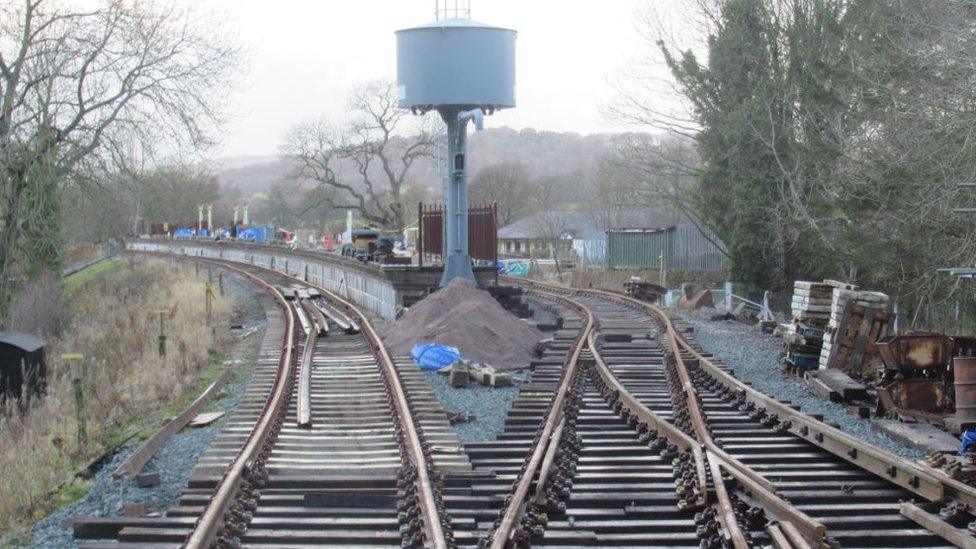Glyn Valley Tramway: Bid to revive historic line gets on track
- Published

Steaming in to Chirk - one of the long lost original locomotives on the Glyn Valley line
Volunteers are pushing ahead with plans to revive part of a historic tramway abandoned nearly 90 years ago.
The line used to haul stone, slate, coal - and passengers - through a picturesque Welsh valley until it closed in 1935.
Work is underway to clear the overgrown trackbed at Chirk, in Wrexham county, and rebuild its station house.
A trust behind the Glyn Valley Tramway bid are now trying to raise £250,000 in an appeal to help fund the scheme.
"It's a question of local pride I think, to see something of significance like this restored and hopefully running," said Nicholas Drukker, chairman of the Glyn Valley Tramway Trust.
The trust is one of two groups based at either end of the eight-mile (13km) line, who are dedicated to keeping the memory of the tramway alive.

It has been back-breaking work to clear the track site, with volunteers turning up whatever the weather
The original track was first a horse-drawn tramway stretching along the Ceiriog Valley, linking Glyn Ceiriog in Denbighshire with Chirk, where granite and slate could find its way to the Shropshire Union Canal.
Opening in 1873, it was later extended and rebuilt, with steam locomotives from Manchester brought to the narrow-gauge line.
The line was unique, the only gauge of its kind in use across Britain at 2ft 4.5 inches (724mm).
"Most of the narrow-gauge railways in Wales are associated with mining or industry of some sort, and this one is no exception," said Mr Drukker.
"There was slate up the hills, gravel - a lot of gravel was produced. There was even a gunpowder factory up there.
"It was specifically created as an industrial line to bring traffic up and down - and passengers."

On track: A model of what the trust hopes to recreate
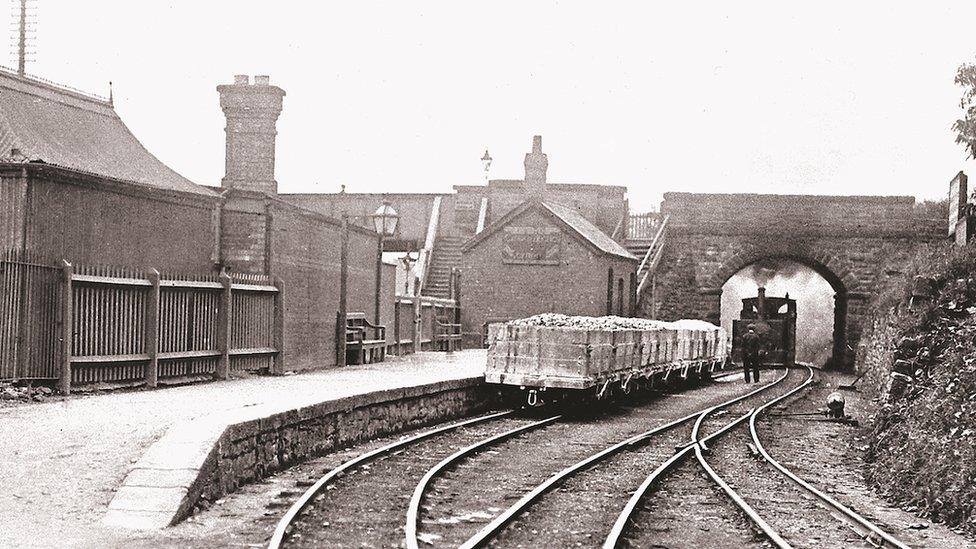
This is how it looked when the line was still running - restoring the platform and rebuilding the station house are the trust's priorities
While nothing remains of the track, some of those passenger carriages were saved when the line closed and restored on the Talyllyn Railway in south Gwynedd - a rail line that became one of the inspirations for children's favourite Thomas the Tank Engine.
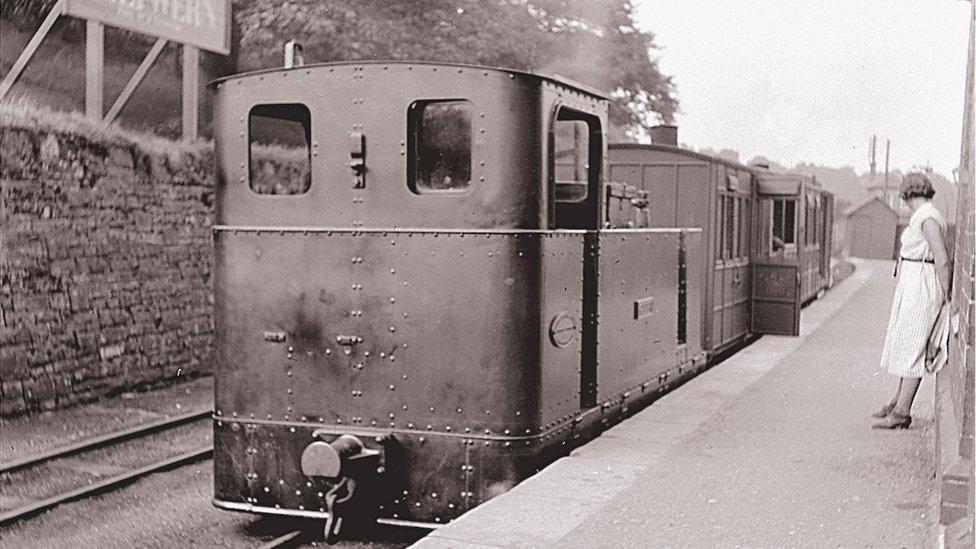
The engines ran a passenger service along the Ceiriog Valley - here, about five miles from Chirk at Dolywern

One of the former Glyn Valley Tramway passenger carriages saved and restored on the Talyllyn Railway
The first challenge facing the team of volunteers, who turn up whatever the weather, is clearing the old track.
The route has become a dumping ground for old industrial building waste, and after decades of neglect, the original trackbed has been covered by a mountain of mud and debris.
"There is still a couple of feet to go here - and we probably won't remove all the material because it would just be so expensive," said Mark Edlington, who has been put in charge of the construction project.
"We'll probably establish some new levels for the tramway to run on."

Mark Edlington is in charge of the construction project at Chirk
He described it as "massive challenge" as they resurrect this section of line, and then rebuild the old station house with mostly original bricks salvaged from the undergrowth.
"In five years' time I want to see the building back in place, platform restored, the retain wall restored, and tracks down - and hopefully some sort of train running," he added.
One of the weapons in the fund-raising arsenal for the mammoth project has been a new scale-model of the station, created by professional model maker and filmmaker Sam Birchall, and featuring in an online video campaign for the trust, fronted by real-life train driving instructor Andrew Christie.
"There's not that many projects that you can get so hands-on with," said Mr Christie, who is passionate about heritage rail restoration and model trains.
"People need to see what they are putting their money into, and what better way to do that than build a model railway."

Enthusiast Andrew Christie is lending his support to the tramway appeal, with the help of a model of the old station
The model will be going on display later this year at the nearby Llangollen Garden Railway Festival in May.
Mr Chrisite said he wanted to help inspire a new generation of railway fans, and encourage others to get involved in the Glyn Valley Tramway project.
"It's a great time to involved in a project like this," he said,
"This is right at the start of it, this is clearing the way, and really getting back to civil engineering."

FUNNIEST WELSH TV OF LAST CENTURY: Join Kiri on a journey of comedic discovery
DIG OUT YOUR CAGOULE AND TIE UP THOSE BOOTS: The Welsh Coast awaits, explore it with Derek

- Published9 July 2021
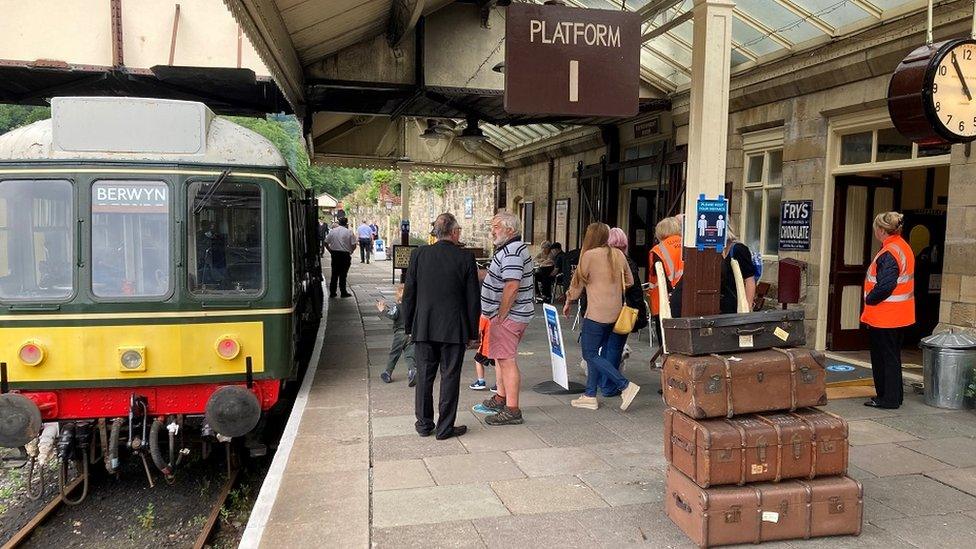
- Published12 June 2021
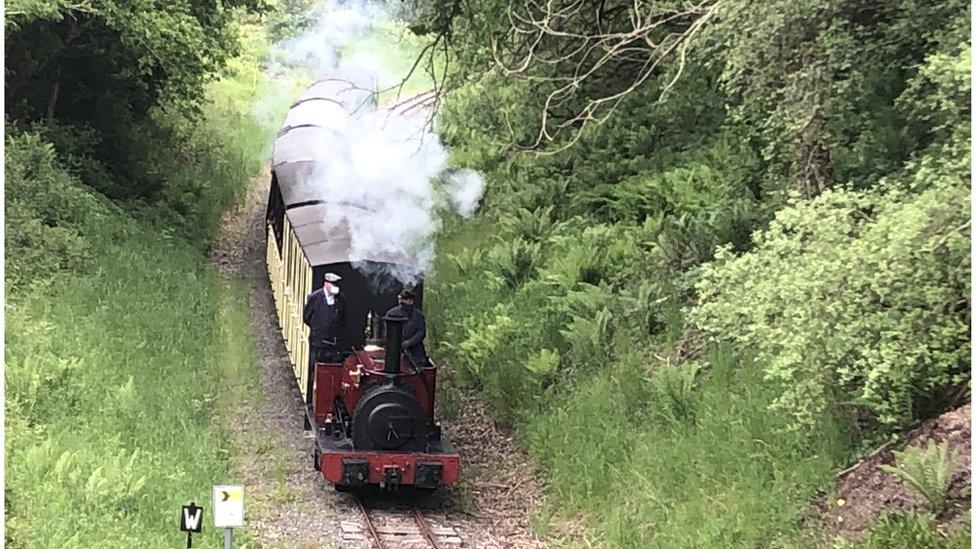
- Published24 January 2021
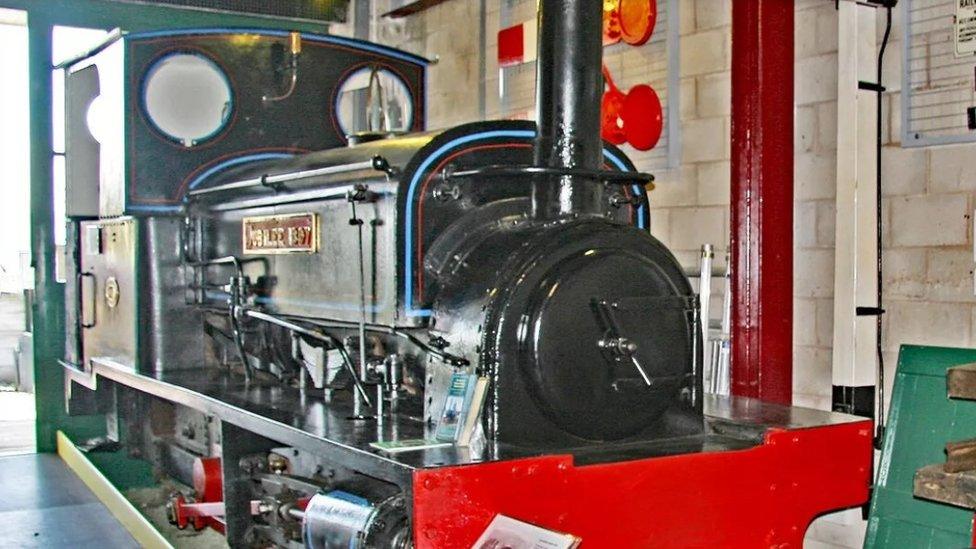
- Published29 November 2020
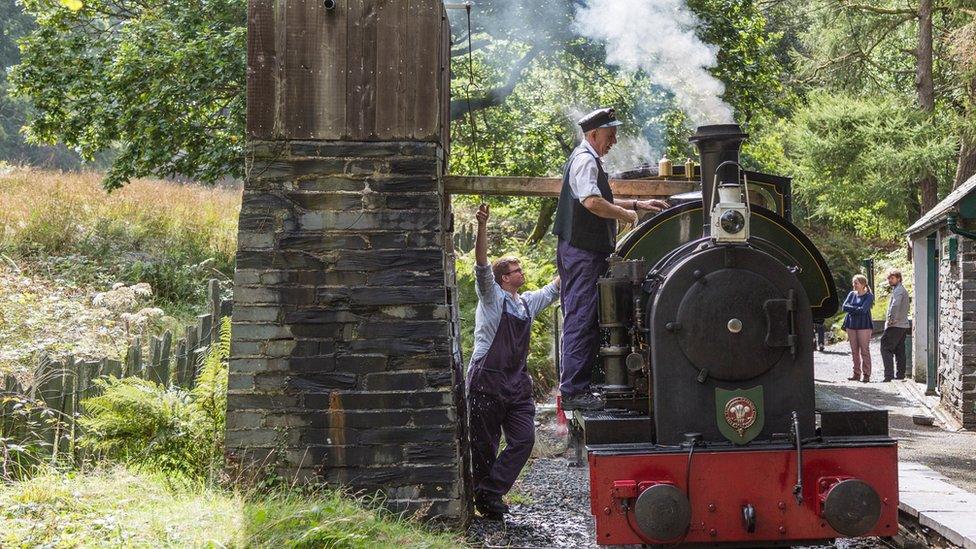
- Published10 December 2019
